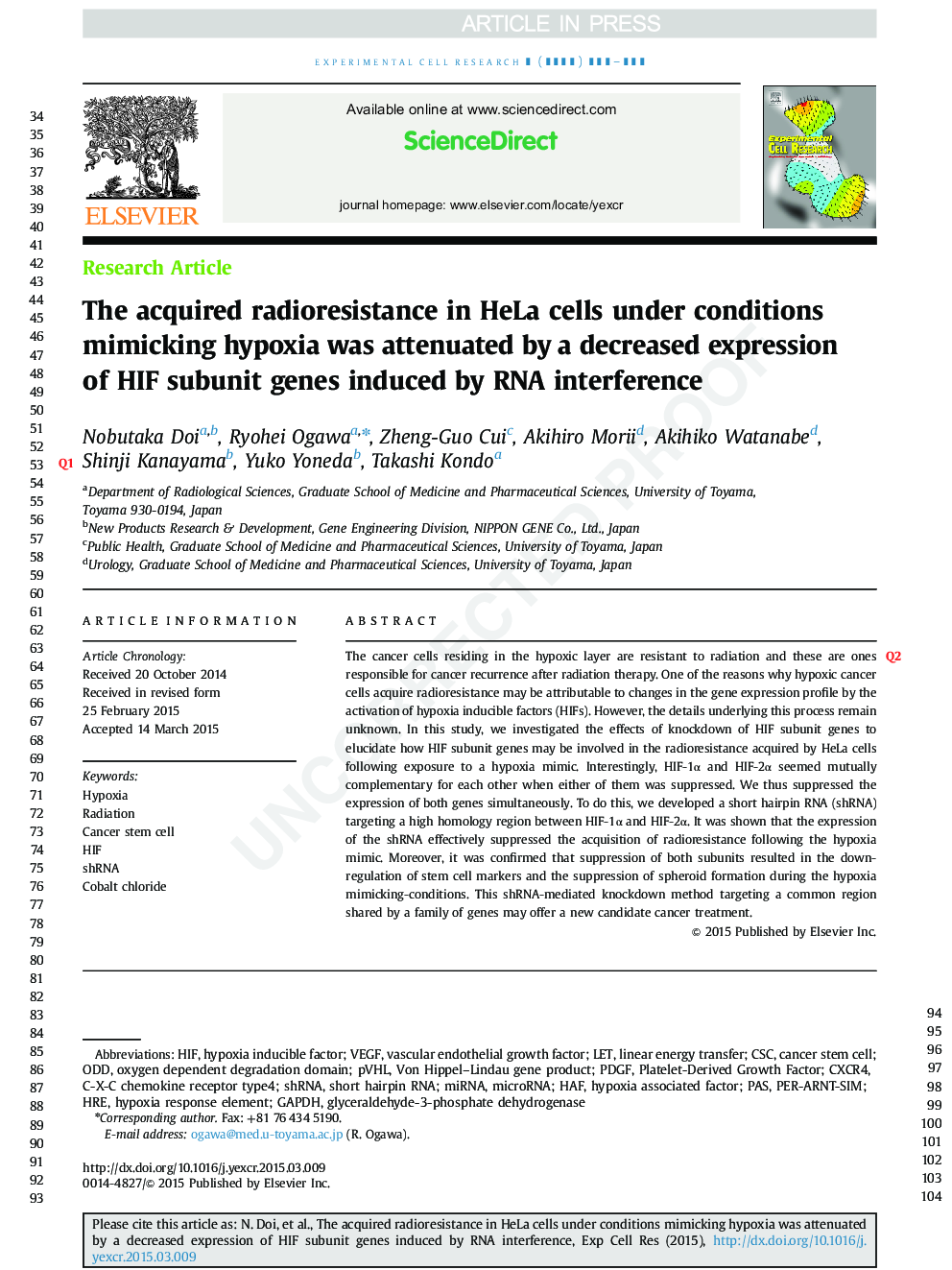| Article ID | Journal | Published Year | Pages | File Type |
|---|---|---|---|---|
| 10903804 | Experimental Cell Research | 2015 | 12 Pages |
Abstract
The cancer cells residing in the hypoxic layer are resistant to radiation and these are ones responsible for cancer recurrence after radiation therapy. One of the reasons why hypoxic cancer cells acquire radioresistance may be attributable to changes in the gene expression profile by the activation of hypoxia inducible factors (HIFs). However, the details underlying this process remain unknown. In this study, we investigated the effects of knockdown of HIF subunit genes to elucidate how HIF subunit genes may be involved in the radioresistance acquired by HeLa cells following exposure to a hypoxia mimic. Interestingly, HIF-1α and HIF-2α seemed mutually complementary for each other when either of them was suppressed. We thus suppressed the expression of both genes simultaneously. To do this, we developed a short hairpin RNA (shRNA) targeting a high homology region between HIF-1α and HIF-2α. It was shown that the expression of the shRNA effectively suppressed the acquisition of radioresistance following the hypoxia mimic. Moreover, it was confirmed that suppression of both subunits resulted in the downregulation of stem cell markers and the suppression of spheroid formation during the hypoxia mimicking-conditions. This shRNA-mediated knockdown method targeting a common region shared by a family of genes may offer a new candidate cancer treatment.
Keywords
Oxygen dependent degradation domainpVHLHREPDGFHIFCXCR4shRNAGAPDHCSCPer-Arnt-Simshort hairpin RNALETLinear Energy TransferHAFcancer stem cellhypoxia response elementVascular endothelial growth factorVascular Endothelial Growth Factor (VEGF)platelet-derived growth factorHypoxia Inducible FactorODDMicroRNAMiRNAPASHypoxiaRadiationCobalt chlorideglyceraldehyde-3-phosphate dehydrogenase
Related Topics
Life Sciences
Biochemistry, Genetics and Molecular Biology
Cancer Research
Authors
Nobutaka Doi, Ryohei Ogawa, Zheng-Guo Cui, Akihiro Morii, Akihiko Watanabe, Shinji Kanayama, Yuko Yoneda, Takashi Kondo,
